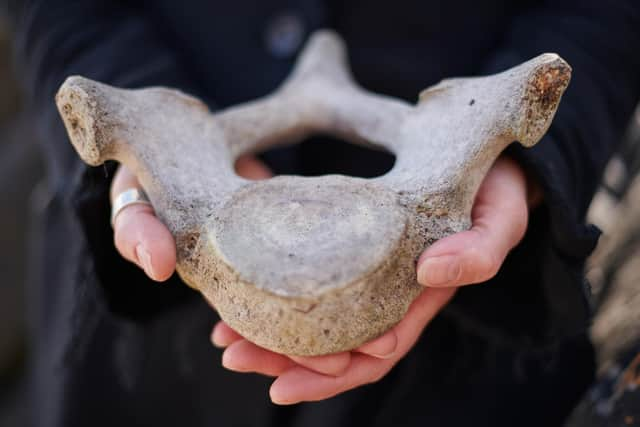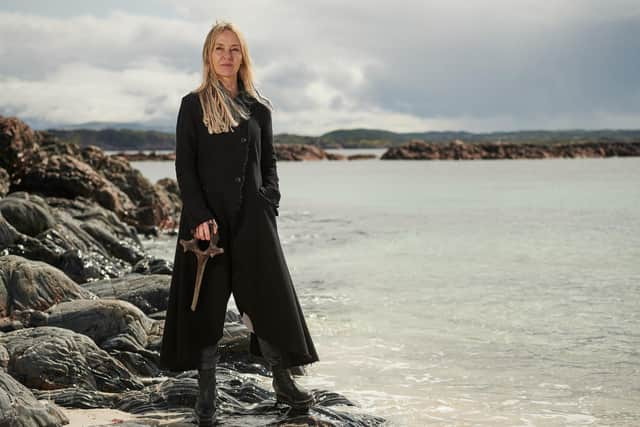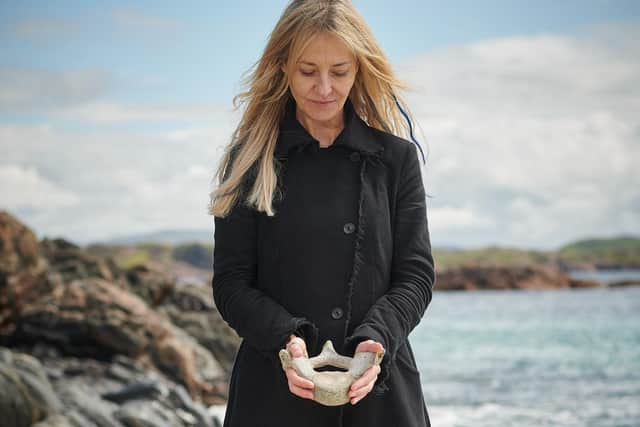Increase in whales being washed up on Scotland's shores inspires new exhibition
An artist based on Iona, one of several Hebridean islands where decomposed whales have been discovered, has led the creation of a multi-media show going on display on neighbouring Mull this summer.
Mhairi Killin spent 11 days at sea off the west coast of Scotland on board a Hebridean Whale and Dolphin Trust research vessel during a huge NATO exercise last year.
Advertisement
Hide AdAdvertisement
Hide AdSome of the work in the exhibition, On Sonorous Seas, which will feature sculpture made from whale bone, video footage, poetry and a soundscape, is inspired by sound and visual data recorded during the trip.


Concern has been growing over the number of whales which have been washed ashore on the Scottish and Irish coasts in recent years.
Many experts believe that sonar which is used to trace submarines may frighten whales to the surface too quickly, leading them to suffer decompression sickness - or the bends - which is similar to the potentially fatal condition experienced by divers.
Research published in 2019 by an international team led by the universities of St Andrews and Iceland found that sonar from naval ships can severely disrupt the behaviour of whales and cause them to stop feeding.
New findings published earlier this year found that man-made underwater noise pollution was being picked up by whales in a similar way to the way they sense natural predators, leaving them with a choice of “life over dinner.”


The exhibition, which opens in July at the An Tobar arts centre on Mull, is said to “interrogate the power and reliance on sound as a survival tool and the impact of the legacy of military colonisation of vast areas of land in the Hebrides on the natural and cultural ecologies of the islands.”
Killin has worked with several other artists on the exhibition, including musician and composer Fergus Hall, whose soundscape was based on recordings of whales and dolphins, as well as sonar and boat engines.
Advertisement
Hide AdAdvertisement
Hide AdPoet and artist Miek Zwamborn has written an “elegy and requiem” for the whales, while calligraphy artist Susie Leiper’s work is imprinted with the impressions of whale bones washed up on Iona.
The sculpture work in the exhibition, which will feature a “constellation” of recorded whale strandings, will include the skull of a whale washed up on the coast of Lewis in 2018.


Live performances of the soundscape compositions will be performed this summer at locations around Mull and Iona where whales have previously washed ashore.
Killin said: “By transforming how we tell the narrative of the 2018 mass standing of 118 beaked whales - a narrative embedded in the overlay of two cryptic environments, the habitats of the military and the whales – through a partnership of science, music and art, we transform how we observe this story.
"Perhaps in doing so we can tell reality differently and bring an audience towards the complexity of this issue.”
Hall said: “The sound environments I have made are imaginary because they need to be.
"The void between our experiences and theirs (the whales) is demonstrated by us requiring technology to catch a mere glimpse of their world yet even then this glimpse is hazy, clouded by the rush of water, boat engines and snapping shrimp.”
Advertisement
Hide AdAdvertisement
Hide AdAlison Lomax, director of the Hebridean Whale and Dolphin Trust, said: “Were excited to be involved in On Sonorous Seas, sharing our long-term monitoring of whales and dolphins off Scotland’s west coast for the project.
"Bringing science and art together creates a unique opportunity to raise awareness of the impacts of sonar and underwater noise in our seas.”
Comments
Want to join the conversation? Please or to comment on this article.
